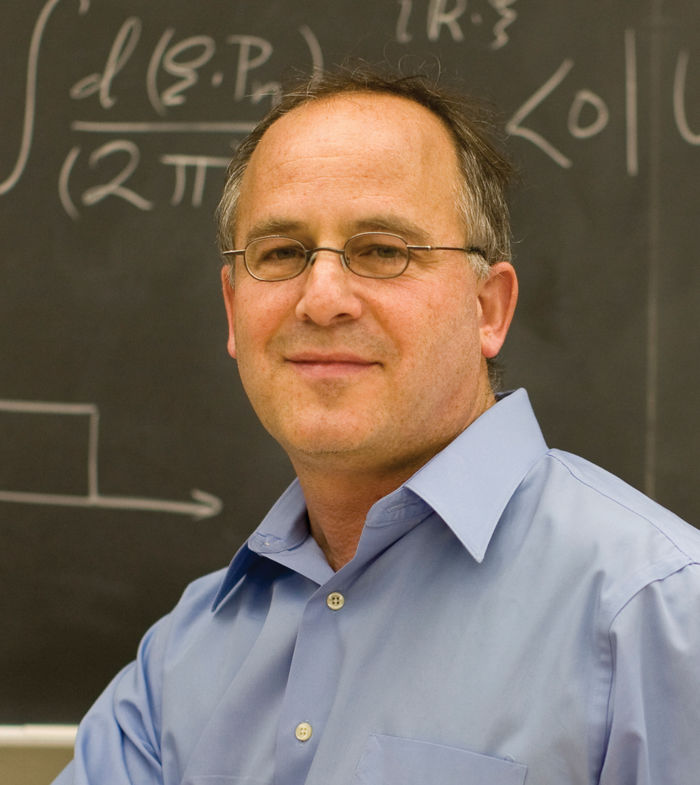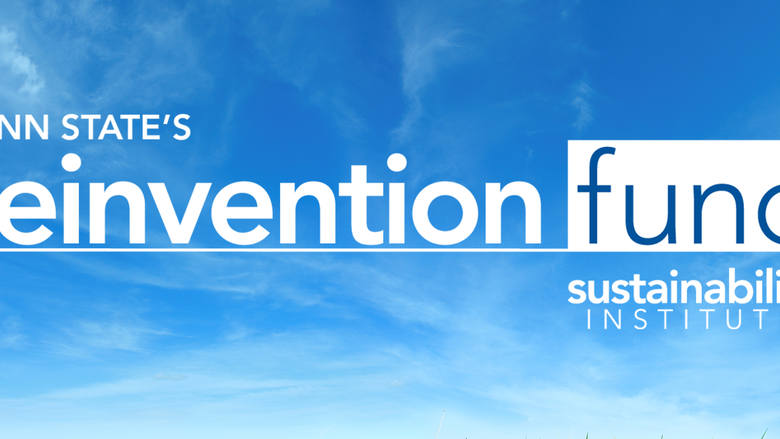
Pictured are Penn State Berks nuclear physics faculty members, left to right: Leonard Gamberg, Daniel Pitonyak and Alexei Prokudin.
READING, Pa. — Penn State Berks is making its mark in the field of theoretical nuclear physics research by becoming the only undergraduate institution of higher education in the nation to receive a highly competitive grant from the Thomas Jefferson National Accelerator Facility (JLab) to partially fund a new professor position through JLab’s prestigious Bridge Program. The campus was also the only undergraduate institution to receive a Topical Collaboration Grant from the U.S. Department of Energy.
Together these grants will help to train the next generation of theoretical nuclear physicists studying at Penn State Berks. Research in theoretical nuclear physics probes the origins and structure of atoms — the building blocks of matter, helping scientists to better understand the particles and the forces that bind them, and ultimately our world.
Research in nuclear physics leads to discoveries that are somewhat difficult to predict but if the past is an indication, the benefits to society will be many and life changing. For example, this line of research led to the concept of magnetic resonance imaging (MRI), which is used in diagnosing diseases such as cancer.
JLab Bridge Grant fosters growth in theoretical nuclear physics research
“This is the first time Penn State University — or any undergraduate institution — has been offered a bridge position with Thomas Jefferson National Accelerator Facility in theoretical nuclear physics,” states Leonard Gamberg, professor of physics at Penn State Berks, who was instrumental in the college receiving the JLab Bridge Grant. “It reflects the excellence of physics research at Penn State Berks. It is an incredibly exciting time for our nuclear physics program.”
Gamberg splits his time between teaching undergraduate courses at Penn State Berks and researching the substructure of the proton and neutron at JLab in Newport News, Virginia.
“The grant provides an excellent opportunity to foster the growth of the college’s theoretical nuclear physics team, which is becoming a prominent force in the research field,” states Gamberg. “The Bridge Appointment which supports Prokudin is a $280,000 grant that spans five years.”
“The overarching goal of the bridge position is to strengthen the nuclear physics research conducted at Penn State Berks and JLab, and assure long-term continuity of that research stream. It is a huge recognition of the physics research program at Penn State Berks,” states Paul Esqueda, senior associate dean for academic affairs at Penn State Berks.
Penn State Berks and JLab conducted a joint international candidate search to hire a nuclear physics expert who would provide synergy between the lab and the classroom. Alexei Prokudin, a dynamic physicist and professor who is highly regarded in the international nuclear physics community, was selected. Prokudin earned his doctorate at the Institute for High Energy Physics in Protvino, Russia in 2000. Prior to joining Penn State Berks, he had 14 years of research experience, first as a post-doctoral research associate at the University of Turin, Italy, and at the National Institute for Nuclear Physics in Turin, Italy; and then as staff scientist at Theory Center of Jefferson Lab.
Hired as assistant professor of physics in July 2015, Prokudin began teaching in the fall semester of 2015, and he is off to an impressive start.
“You have to be a good educator if you’re at Penn State Berks,” Gamberg says. “Alexei has already established a new computational nuclear physics course, and he is overseeing students completing independent study. This position is a major investment from Jefferson Lab and the University, but we’re already seeing a positive impact of the bridge program.”
Prokudin’s computational nuclear physics course focuses on training the next generation of scientists to become involved in research. One of his students, Mason Albright, is part of that next generation. Under Prokudin’s mentorship, Albright applied for and was selected to participate in the Department of Energy’s Student Undergraduate Laboratory Internship program. He spent the summer of 2016 at JLab for a 10-week program conducting research in nuclear physics.
While Albright is currently completing his degree at Penn State University Park campus, he continues to conduct research with Prokudin. Albright was invited to give a presentation about the Undergraduate Laboratory Internship at the American Physical Society Meeting in February 2017.
A computer science major with a minor in physics, Albright plans to become a computational physicist, a position where he will use computers and numerical analysis to solve physics problems for which a theoretical solution has been developed. When asked what sparked his interest in the field, he explained, “In high school, I realized that I was very interested in computer science, but not just in building software; I saw it as a means to an end. When I found out what computational science was, it was a perfect fit for me. It allows me to work with all different sciences. Dr. Prokudin and Dr. Gamberg have given me direction in finding the right field of study for me.”
In addition, Prokudin was awarded a prestigious individual National Science Foundation (NSF) Research Undergraduate Institution (RUI) grant titled “Three-Dimensional structure of the nucleon in QCD.” The grant is for undergraduate research, spans three years, 2016-2019, and totals $150,000.
Research expands through DOE Grants
In addition to the JLab grant, Gamberg and Prokudin were among those recently awarded a Topical Collaboration Grant from the U.S. Department of Energy in support of their project titled “Coordinated theoretical approach to transverse momentum dependent hadron structure in QCD (TMD Collaboration).” The award spans five years, from 2016-20, and totals $2.16 million for the nuclear physics group, which also includes Duke University, Lawrence Berkeley National Laboratory, Los Alamos National Laboratory, Massachusetts Institute of Technology, Temple University, University of Arizona, University of Maryland, and others.
This grant supports research on the quark and gluon structure of the nucleon, or the study of the structure of matter. “Part of the award is also designated to support and train undergraduates in nuclear physics research, and Penn State Berks is the only selected institution that will support undergraduate research,” Gamberg states.
The grant also supports a post-doctoral research associate who will spend one-and-a-half years at Penn State Berks, and the same length of time at Old Dominion University in Norfolk, Virginia. Daniel Pitonyak, who worked as a post-doctoral research associate at Brookhaven National Laboratory, began his term at the college in September 2016.
“Dr. Pitonyak has become an integral part of Penn State Berks: He is conducting high-level research in nuclear physics and is teaching several physics courses,” states Gamberg.
“Penn State Berks is becoming a hub for theoretical physics research,” adds Gamberg, who also landed an individual $149,000 grant from the U.S. Department of Energy for his project titled “Transverse spin and momentum structure of hadrons in QCD.” The grant is effective through 2018.
Prokudin and Gamberg say they are working daily to maintain the growth and long-term sustainability of the physics department, and in particular, the nuclear physics research team at Penn State Berks. “These latest grants are fantastic achievements for Penn State Berks because they increase the college’s visibility and signal the high level of teaching and research that we have here,” comments Gamberg. “It also helps to support significant undergraduate research, which will help us to continue to attract top talent.”
About Thomas Jefferson National Accelerator Facility
Thomas Jefferson National Accelerator Facility is one of 17 national laboratories funded by the U.S. Department of Energy. Its primary mission is to conduct basic research of the atom's nucleus using the lab’s unique particle accelerator, known as the Continuous Electron Beam Accelerator Facility (CEBAF). JLab also conducts a variety of research using its Free-Electron Laser, which is based on the same electron-accelerating technology used in CEBAF. In addition to its science mission, the lab provides programs designed to help educate the next generation in science and technology, and to engage the public.






